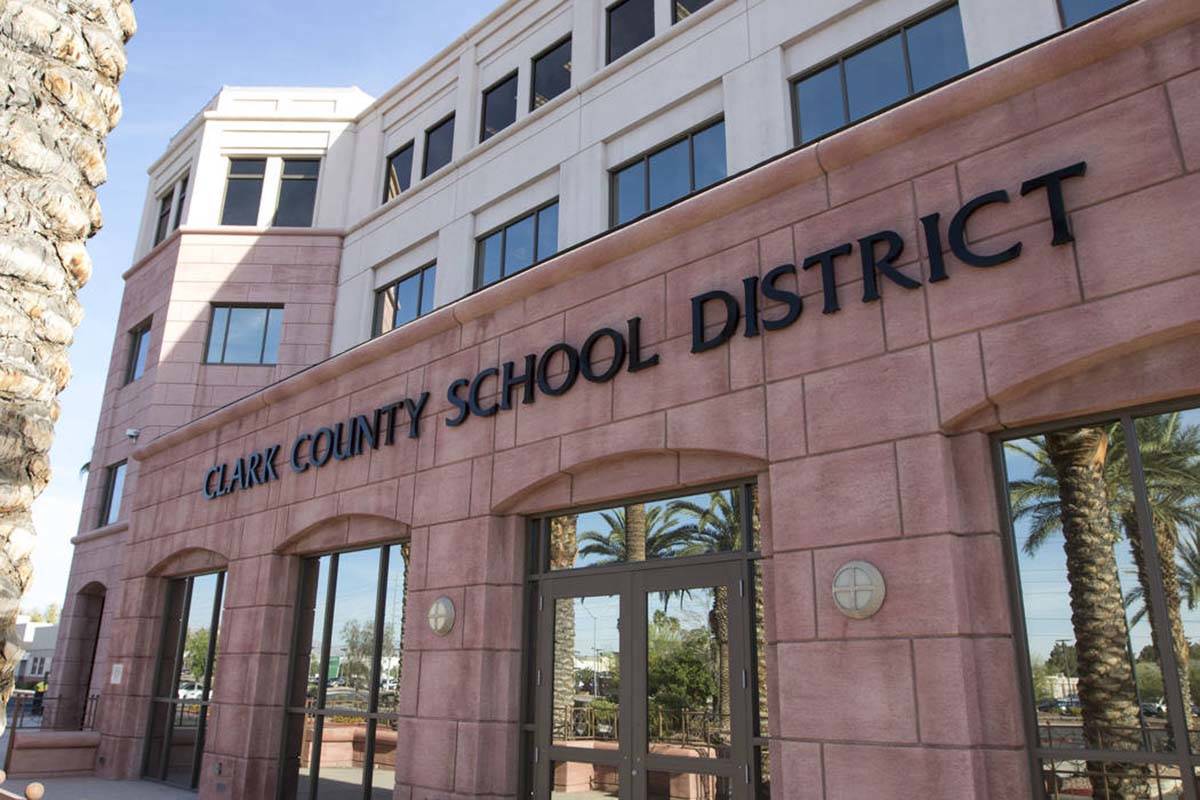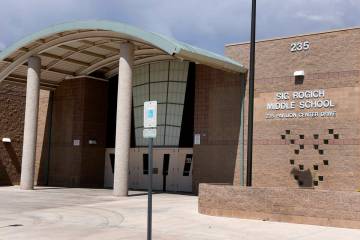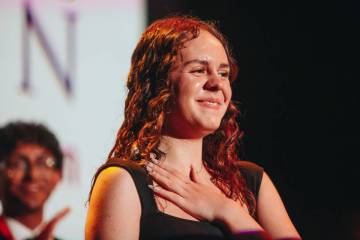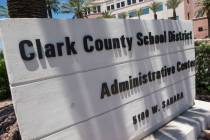CCSD trustees hold 2nd session on school reopening plan
The Clark County School District is moving ahead with its proposed plan to reopen schools on a staggered schedule this fall, with additional details presented to the School Board on Monday but few changes to the basic recommendations.
Students of all ages will attend classes on an alternating, cohort-based schedule under the plan, with a digital-only option for those who choose to stay home full time. The revised cost of the plan is $94 million, according to the presentation, up approximately $10 million from the first draft because of the additional costs of instructional materials.
It’s funded through a combination of general funds, federal emergency funds and bond funds, the latter of which are dedicated to improving schools’ Wi-Fi capabilities. An additional $28 million in federal CARES Act funding is earmarked for salaries and benefits related to expanding the Nevada Learning Academy curriculum to elementary grades.
A final plan is expected back in front of the board on Thursday for a vote. If it doesn’t secure approval from the trustees by a July 13 deadline set by the state, the district will have to delay its reopening, said Superintendent Jesus Jara.
“We have to paint a picture of where we are,” he said of the presentation.
Much of the conversation Monday revolved around which teachers would be responsible for which cohorts, and whether teachers would be expected to teach in person as well as supervise distance learning.
Deputy Superintendent Brenda Larsen-Mitchell said surveys sent to families in the near future will gauge the demand for the in-person cohorts A and B, as well as the online-only Cohort C, in order to determine whether some schools will dedicate teachers entirely to the latter.
If 20 percent of students in a school choose Cohort C, Larsen-Mitchell said, the district believes a school would be able to allocate dedicated staff to the group. Those teachers would be expected to hold virtual office hours and support Cohort C students, as well as those in Cohort A and B learning from home on their designated days.
To pull off the distance learning portion of the plan, the district plans to spend $28 million in federal funds on Chromebooks, though Chief College, Career and Equity Officer Mike Barton said that because of supply chain issues, the devices may not be in all students’ hands until late fall.
Child care
The answer on the child care challenges presented by the plan remained largely the same at Monday’s meeting, with district staff stating that they will work with community partners to find possible solutions.
Chief of Staff Christopher Bernier said the district has also begun looking into using campuses’ multipurpose rooms to support teachers who have children, though the idea would likely only apply to kids over kindergarten age.
“We are hopeful that we will have some opportunity for our teachers either at their school site or a central hub of school sites … where we might be able to provide for those students who are school age and up,” Bernier said.
Other details that emerged in the presentation Monday included the confirmation that school playgrounds will be off-limits during Phase 2 of Nevada’s reopening plan, with elementary students spending their breaks doing activities like stretching.
Secondary students, meanwhile, would have dedicated desks during their two days in the classroom, as only half of all desks would be used during class, reducing cleaning needs.
Since it was announced, the plan has received criticism both from groups hoping to reopen schools for full-time instruction as well as those who believe a return to school of any kind is unsafe, with Jara defending it as sound, if not ideal.
Still, some community feedback is under consideration, like a request to allow elementary special subject teachers to rotate in and out of classrooms instead of teach through distance education only, as well as a proposal to have special education students meet in small groups on Wednesdays.
The addition of elementary specials would also allow teachers to have a 30-minute, duty-free lunch.
One group of teachers would also like the district to reconsider the plan to have secondary students take only four condensed classes each semester, saying that the schedule limits students’ opportunities to take art, Advanced Placement and other specialty classes.
Kim Ritzer, choir director at Green Valley High School, said it’s possible for high schools to offer their usual six- or eight-class schedules, if they were divided in half on the two days of in-person learning.
Though the proposal would reduce the instructional minutes for each subject, Ritzer said it would solve the issue of instructional continuity for students who may take an AP class in the fall, but not take the corresponding test until the spring. It would keep students in their arts programs all year, she said, and allow teachers to have staggered prep periods, which are regularly used at schools to cover teacher absences.
“We want the kids to have as many opportunities as possible to see what they can do,” Ritzer said.
Meanwhile, a community group organized by Trustee Danielle Ford has also posted a series of recommendations meant to build upon the current plan, including a proposal to bring students in self-contained special education classrooms back to school full time, and create a home-school adviser position and dedicated curriculum for families who choose distance learning.
The requests posted on Ford’s website also ask for more flexibility on the school level to make modifications to reopening plans, though Jara has said that uniformity across all schools is key to avoid the inequities experienced during the spring quarter of distance learning. Jara indicated at the end of Monday’s meeting that there may be some schedule flexibility for rural schools whose population numbers allow for social distancing.
Thursday’s board meeting begins at 3 p.m. with agenda items not related to reopening, and the reopening plan slated for 6 p.m.
Contact Aleksandra Appleton at 702-383-0218 or aappleton @reviewjournal.com. Follow @aleksappleton on Twitter.




























